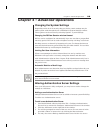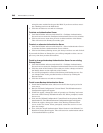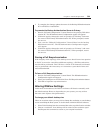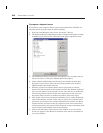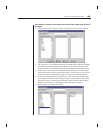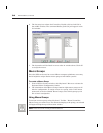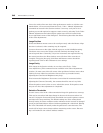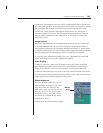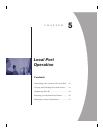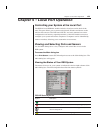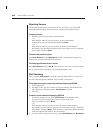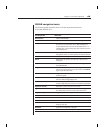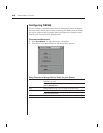
Chapter 4: Advanced Operations 37
The Priority Threshold sets the level where a significant change is noted, such
as a new cursor position. Increasing the level will make the mouse movements
more sluggish. The Priority should always be greater than the noise, and
usually 2 to 3 times its value. Setting these thresholds to zero will cause a
constant refresh of the screen. This will make cursor tracking very difficult
and can make it difficult for other network users. The goal is to reduce the
packet rate to zero.
Image Capture
The image width and fine-tuning adjustments pertain to how the target video
is captured and digitized and are seldom changed. The Width parameter is
automatically changed by the Automatic Adjustment function. A special image
is required on the target in order to make accurate adjustments independently.
The Fine setting may be adjusted up or down in eight unit increments.
To save the Video Adjustment settings once you’ve finished, click on the OK
button at the bottom of the Video Adjustments window.
Video Scaling
At times, a user may connect to a computer running at a higher resolution
than that of their remote system. When this occurs, the host system will be
displayed in a DSView window with scroll bars. The host resolution will
remain the same and users can scroll to the areas that fall outside of the frame.
If a user wishes to display the host system’s entire screen it may be scaled to fit
within the current resolution with the Scaling Tools.
Mouse Alignment
Because the DSR cannot receive con-
stant feedback from the mouse, there
are times when the mouse on the
DSR system may become out of sync
with the mouse on the host system.
When this occurs, users may resync
the mouse by clicking on the Mouse
Align button shown.
In most cases, this will correct the problem.
Mouse
Align



